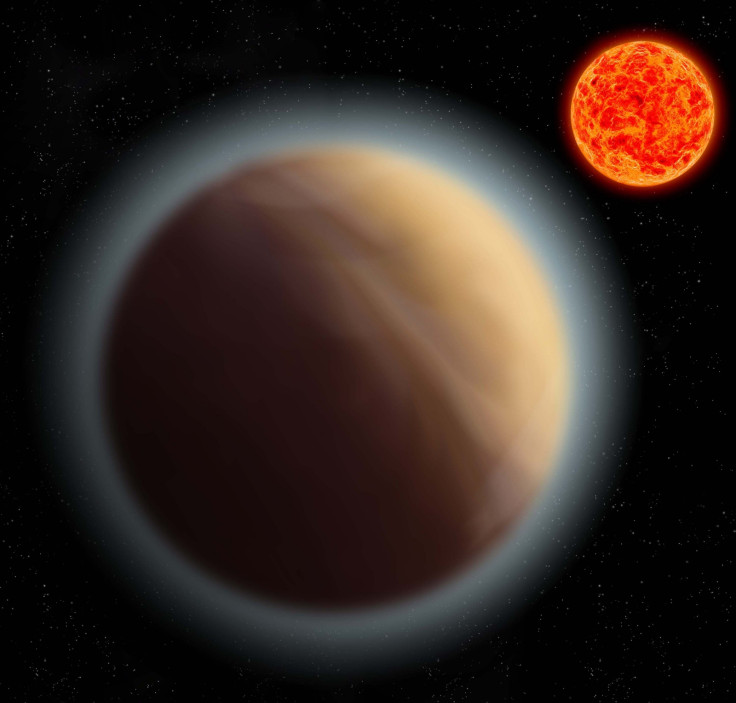Atmosphere rich in water detected around alien 'Earth-like' planet 39 light years away
The exoplanet, 39 light years away, appears to have an atmosphere rich in water and methane.
Scientists have detected what they believe to be an atmosphere around an Earth-like exoplanet. The planet, GJ 1132b, is a super-Earth located 39 light years away, and research currently indicates it has an atmosphere rich in water and methane – potentially being a 'water world' of hot steam.
Detecting and understanding the atmospheres of exoplanets (planets outside of our solar system) is key to the hunt for alien life in the universe. A planet with an atmosphere similar to Earth would be an indicator it has the conditions right for life to emerge. But detecting atmospheres with current telescopes is very difficult.
In a study published in The Astronomical Journal, a team of European astronomers were looking at a planet orbiting a red dwarf star in the constellation Vela. Using the ESO's 2.2m MPG telescope, they observed the planet along seven different wavelengths.
GJ 1132b passes in front of it star every 1.6 days, blocking some of the light as it does. Researchers observed the decrease in brightness as the planet – and its atmosphere – absorbed some of the light as it moved in front. This allowed them to work out its size (around 1.4 times the size of Earth).
But their findings also showed something intriguing. In one of the infrared wavelengths, the planet appeared bigger. This indicates it has an atmosphere that is opaque to this wavelength, but transparent in all the others. Moreover, the wavelength at which it was opaque indicates the presence of water.

The scientists then simulated several different versions of the atmosphere to find one that best matched their observations. Their models suggest GJ 1132b has an atmosphere rich in water and methane. Several possibilities for what the planet would be like are put forward, one of which being it is a 'water world' with a hot, steamy atmosphere.
Their findings do not indicate the presence of life – nor can they confirm the presence of an atmosphere around this planet. It does however provide some hope that there are many more Earth-like planets out there with atmospheres. Red dwarfs are the most common type of star in the universe, so the presence of an atmosphere in GJ 1132b may point to an abundance of similar planets.
"Detecting the atmospheres of low-mass, low-temperature exoplanets is a high-priority goal on the path to ultimately detecting biosignatures in the atmospheres of habitable exoplanets," the team wrote.
"Our results show that [planets like GJ 1132b] are capable of retaining an extensive atmosphere. The atmosphere contains multiple molecular species and has likely persisted for many billions of years since the formation of the system."
They said GJ 1132b should be a target for the Hubble Space Telescope (HST) so further analysis can take place. They also say it is a promising target planet for the James Webb Telescope, which is due to launch next year and will be able to detect the atmospheres and any biosignatures present.
"New observations with HST and existing ground-based facilities would be able to confirm the present detection and further constrain the atmospheric composition of the planet," they concluded.
© Copyright IBTimes 2025. All rights reserved.






















